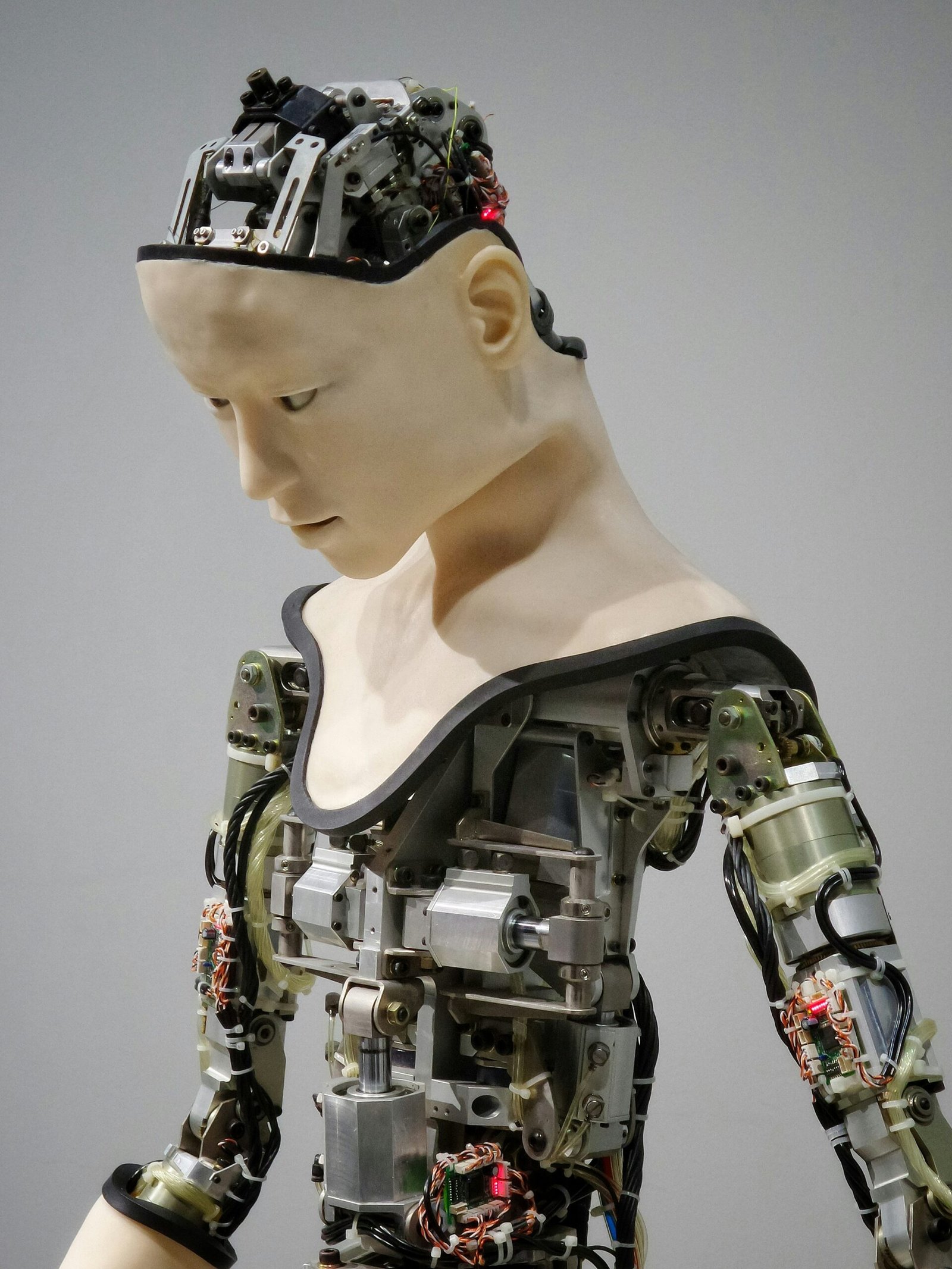Revolutionary Qubit Technology Paves Way for Practical Quantum Computers
Introduction to Qubit Technology
Qubit technology represents a significant departure from classical computing paradigms, forming the cornerstone of quantum computing. Unlike classical bits, which exist in a binary state of either 0 or 1, qubits harness the principles of quantum mechanics to exist in multiple states simultaneously. This capability is rooted in a fundamental quantum phenomenon known as superposition. Superposition allows a qubit to be in a state of 0, 1, or any quantum superposition of these states, thereby enabling quantum computers to process a vast amount of information concurrently.
Another crucial aspect of qubit technology is entanglement, which Einstein famously referred to as “spooky action at a distance.” Entanglement is a unique quantum property where qubits become interconnected in such a way that the state of one qubit instantly influences the state of another, regardless of the distance separating them. This interconnection allows for unprecedented levels of coordination and information transfer, which are pivotal for the extraordinary computational power of quantum computers.
The significance of qubits in the realm of quantum computing cannot be overstated. Qubit-based systems have the potential to solve complex problems that are currently intractable for classical computers, including cryptographic analysis, optimization problems, and simulations of molecular structures. This transformative capability promises to revolutionize fields such as materials science, medicine, and artificial intelligence by enabling researchers to perform computations that were previously thought impossible.
In essence, qubit technology is not just an incremental improvement over classical computing; it is a radical leap forward. By leveraging the principles of superposition and entanglement, qubits offer a new computational paradigm that holds the promise of unparalleled processing power and efficiency. This foundational understanding of qubits and their operational principles sets the stage for exploring the broader implications and advancements in quantum computing technology.
Historical Development of Quantum Computing
The concept of quantum computing has its roots in the early 1980s when physicist Richard Feynman proposed that classical computers were inadequate for simulating quantum systems. This theoretical inception marked the beginning of a new era in computational science, where quantum mechanics could be harnessed to perform calculations beyond the reach of traditional computers. Another landmark moment came in 1985 when David Deutsch at the University of Oxford formulated the idea of a universal quantum computer, laying the groundwork for the field’s theoretical framework.
The 1990s witnessed significant advancements in the realm of quantum computing. Peter Shor’s algorithm, introduced in 1994, demonstrated that a quantum computer could efficiently solve problems like integer factorization, which are computationally intensive for classical computers. This breakthrough highlighted the potential of quantum computers to revolutionize fields such as cryptography. Concurrently, Lov Grover developed an algorithm in 1996 that showcased the capability of quantum computing to search unsorted databases exponentially faster than classical methods.
Experimental implementations began to gain traction in the late 1990s and early 2000s. Researchers at IBM and Stanford University managed to create rudimentary quantum bits, or qubits, using nuclear magnetic resonance (NMR) techniques. These early experiments proved the feasibility of manipulating qubits, albeit on a very small scale. The pursuit to build practical quantum computers saw another leap with the advent of superconducting qubits and trapped ion qubits, which provided more stable and scalable options.
Institutions like IBM, Google, and the Massachusetts Institute of Technology (MIT) have been at the forefront of quantum computing research. In 2019, Google announced that its quantum computer, Sycamore, had achieved quantum supremacy by performing a specific task much faster than the world’s most powerful supercomputers. This milestone underscored the remarkable progress in qubit technology and validated decades of theoretical and experimental work.
Today, the historical trajectory of quantum computing stands as a testament to human ingenuity and persistence. From theoretical models to practical implementations, each milestone has paved the way for the revolutionary advancements we see in qubit technology, bringing us closer to realizing the full potential of practical quantum computers.
The implementation of qubits in quantum computing presents numerous technical challenges that have historically hindered the development of practical quantum computers. One of the primary issues is coherence time, which refers to the duration a qubit can maintain its quantum state before decoherence occurs. Decoherence is caused by interactions with the surrounding environment, and it leads to the loss of quantum information. Achieving longer coherence times is crucial for performing complex computations, but it remains a significant obstacle.
Another critical challenge is the error rate in qubit operations. Quantum computations are highly susceptible to errors due to the fragile nature of quantum states. High error rates can severely impact the accuracy and reliability of computations. Error correction techniques are being developed, but they require additional qubits and computational resources, which complicates the overall system design.
Scalability is also a major concern in qubit implementation. Building a quantum computer with a large number of qubits is necessary to solve practical, real-world problems. However, as the number of qubits increases, so does the complexity of controlling and maintaining them. This includes managing the physical space for qubits, ensuring precise control over quantum gates, and dealing with increased error rates and decoherence.
Different types of qubits, such as superconducting qubits and trapped ions, offer varying advantages and limitations. Superconducting qubits, for instance, are fabricated using well-established semiconductor manufacturing techniques, which makes them easier to integrate with existing technology. They also have relatively fast operation times. However, they typically suffer from shorter coherence times and higher error rates compared to other types. On the other hand, trapped ion qubits boast longer coherence times and lower error rates but require complex and bulky laser systems for manipulation, posing challenges for scalability.
These inherent challenges in qubit implementation are at the forefront of ongoing research. Addressing these issues is essential for advancing the field of quantum computing and realizing its full potential.
Breakthroughs in Qubit Technology
Recent advancements in qubit technology are significantly pushing the boundaries of what is possible in the realm of quantum computing. One of the most notable breakthroughs is the enhancement of qubit coherence times. Qubits, which are the fundamental units of quantum information, traditionally suffer from short coherence times, limiting their practical applications. However, researchers have made substantial progress in extending these times, allowing for more complex and prolonged quantum computations.
Another critical area of development is qubit error correction. Quantum systems are inherently prone to errors due to their sensitivity to environmental disturbances. Innovations in quantum error correction algorithms have been pivotal in mitigating these errors, making quantum computers more reliable. Techniques such as the surface code and topological qubits are showing promise in reducing error rates to levels that are manageable for practical applications.
Qubit interconnectivity has also seen remarkable improvements. Efficient communication between qubits is essential for the execution of complex quantum algorithms. Advances in qubit interconnectivity, such as the development of high-fidelity quantum gates and the implementation of quantum teleportation protocols, are enhancing the scalability of quantum systems. These improvements are crucial for building larger, more powerful quantum computers capable of solving real-world problems.
Real-world examples of these breakthroughs are already emerging. For instance, IBM’s Quantum Hummingbird processor has demonstrated increased coherence times and improved error rates. Similarly, Google’s quantum processor, Sycamore, has showcased the potential of high-fidelity quantum gates and extensive qubit interconnectivity. These case studies underscore the practical advancements in qubit technology, bringing us closer to the realization of functional quantum computers.
In summary, the continuous progress in qubit coherence, error correction, and interconnectivity is revolutionizing the field of quantum computing. These breakthroughs are laying the groundwork for practical applications, transforming theoretical concepts into tangible technologies that promise to reshape various industries.
Quantum computing, powered by revolutionary qubit technology, offers unprecedented capabilities that extend far beyond the scope of classical computers. This advancement is set to transform numerous fields, beginning with cryptography. Quantum computers can easily break traditional encryption methods, which rely on the difficulty of factorizing large numbers—a feat impossible for classical computers within a reasonable timeframe. Quantum algorithms, such as Shor’s algorithm, can solve these problems efficiently, prompting the development of quantum-resistant cryptographic methods.
In material science, quantum computing opens new avenues for simulating and understanding complex molecular structures. Classical computers struggle with the exponential growth in variables when simulating quantum systems. Quantum computers, however, can handle these calculations more naturally, leading to breakthroughs in designing new materials with unique properties. This has significant implications for industries ranging from electronics to sustainable energy, where superior materials could lead to more efficient solar panels or better batteries.
Drug discovery is another field poised for transformation through quantum computing. The process of identifying potential drug candidates involves simulating molecular interactions, a task that demands enormous computational power. Quantum computers can perform these simulations with high precision, speeding up the drug discovery process and reducing costs. This capability is particularly valuable in the development of treatments for diseases that currently lack effective therapies, such as Alzheimer’s and certain cancers.
Artificial intelligence (AI) stands to benefit immensely from advances in quantum computing. Machine learning algorithms, which often require processing vast amounts of data, can be significantly accelerated by quantum processors. This speedup can enable more sophisticated AI models and enhance capabilities in pattern recognition, natural language processing, and autonomous systems. Quantum computing’s potential to handle large datasets and complex computations positions it as a game-changer in the AI landscape.
These examples illustrate just a few of the groundbreaking applications of quantum computing. As qubit technology continues to evolve, the boundaries of what is possible will expand, offering solutions to problems that were previously deemed unsolvable by classical means.
Industry Impact and Future Prospects
The advent of revolutionary qubit technology is set to have a profound impact on numerous industries, transforming the computational landscape in ways previously thought impossible. Various sectors, from pharmaceuticals to finance, are poised to benefit tremendously from the unparalleled processing power and speed that practical quantum computers promise. In the pharmaceutical industry, for instance, quantum computing could expedite drug discovery processes by enabling the simulation of complex molecular structures, which would otherwise take years using classical computers. Similarly, in finance, quantum algorithms could optimize investment portfolios and risk assessments with unprecedented precision, thereby increasing profitability and reducing uncertainties.
Governments and corporations worldwide are acutely aware of these advantages and are thus making substantial investments in quantum computing research and development. Leading tech giants such as IBM, Google, and Microsoft are at the forefront, pouring billions into the development of quantum hardware and software. Additionally, governmental bodies in countries like the United States, China, and the European Union have initiated national quantum initiatives, aiming to secure a competitive edge in this transformative technology. These investments are not just confined to research labs; they extend to collaborations with academic institutions and startups, fostering a robust ecosystem for innovation.
Looking ahead, the future prospects of practical quantum computers appear promising but come with their set of challenges. While significant strides have been made, particularly in qubit coherence and error correction, large-scale, fault-tolerant quantum computers are still a few years away. Experts predict that within the next decade, we could witness the first generation of commercially viable quantum machines. As these advancements continue to unfold, industries must prepare to integrate quantum computing into their operations to stay competitive. This includes upskilling the current workforce, developing quantum-ready software applications, and establishing ethical guidelines for the use of quantum technology.
In summary, the impact of revolutionary qubit technology on various industries is substantial and far-reaching. With continued investment and research, the widespread adoption of practical quantum computers seems not just possible but inevitable, heralding a new era of computational prowess.
Ethical and Societal Implications
The advent of quantum computing heralds not only a technological revolution but also a profound transformation in the ethical and societal landscape. One of the primary concerns is data privacy. Quantum computers, with their unparalleled processing power, could potentially break current encryption methods, exposing sensitive information. This raises urgent questions about the adequacy of existing privacy safeguards and the need for new cryptographic techniques that can withstand quantum decryption capabilities.
Cybersecurity is another critical area impacted by quantum technology. The robustness of digital infrastructures that underpin essential services—such as banking, healthcare, and government operations—could be compromised. Therefore, developing quantum-resistant encryption and preparing for a quantum-secure future is imperative to protect against potential breaches. The transition to quantum-safe protocols requires significant research, investment, and global collaboration.
Moreover, the deployment of quantum computing could exacerbate digital inequality. As advanced quantum technologies become accessible, the gap between tech-savvy nations or corporations and those lacking such resources might widen. This disparity could lead to an uneven distribution of technological benefits, where only a privileged few can harness the full potential of quantum computing, thereby amplifying existing socio-economic divides.
To navigate these ethical and societal challenges, robust regulatory frameworks are essential. Policymakers must develop comprehensive guidelines that address the unique risks posed by quantum technologies. Such regulations should ensure that advancements in quantum computing are aligned with ethical standards and public interests. Additionally, international cooperation is crucial. Quantum technology transcends borders, and a coordinated global effort is necessary to establish norms and protocols that manage its risks effectively.
In conclusion, while quantum computing promises significant advancements, it also necessitates a careful examination of its ethical and societal implications. By proactively addressing data privacy, cybersecurity, and digital inequality, and by fostering international regulatory cooperation, we can ensure that the benefits of quantum technology are equitably distributed and its risks are responsibly managed.
Conclusion and Call to Action
The advent of revolutionary qubit technology marks a significant milestone in the journey toward practical quantum computers. Throughout this blog post, we have delved into the intricacies of qubit advancements, their potential to surpass classical computing capabilities, and the transformative impact they promise across various sectors, from cryptography to complex simulations. As quantum computing continues to evolve, the role of advanced qubit technology cannot be overstated. These breakthroughs are not mere incremental changes; they herald a new era of computational power and efficiency.
It is imperative for professionals, researchers, and enthusiasts to stay abreast of ongoing developments in quantum computing. By doing so, they can better understand and leverage the potential of qubit technology. Whether you are in academia, industry, or simply a tech aficionado, remaining informed about these advancements can open doors to innovative applications and collaborative opportunities.
We encourage you to explore further resources, engage with the quantum computing community, and consider how you might contribute to or benefit from this technological revolution. The promise of qubit technology is vast, and its implications are profound. By participating in this evolving field, you can be part of a transformative journey that reshapes the future of computing.
For those eager to dive deeper, numerous scholarly articles, forums, and webinars are available that discuss the latest research and practical implementations of quantum computing. Engaging with these materials will not only enhance your knowledge but also connect you with like-minded individuals and experts in the field.
Stay informed, stay curious, and take an active role in the unfolding narrative of quantum computing. The future is being written today, and your engagement can help shape the trajectory of this groundbreaking technology.







